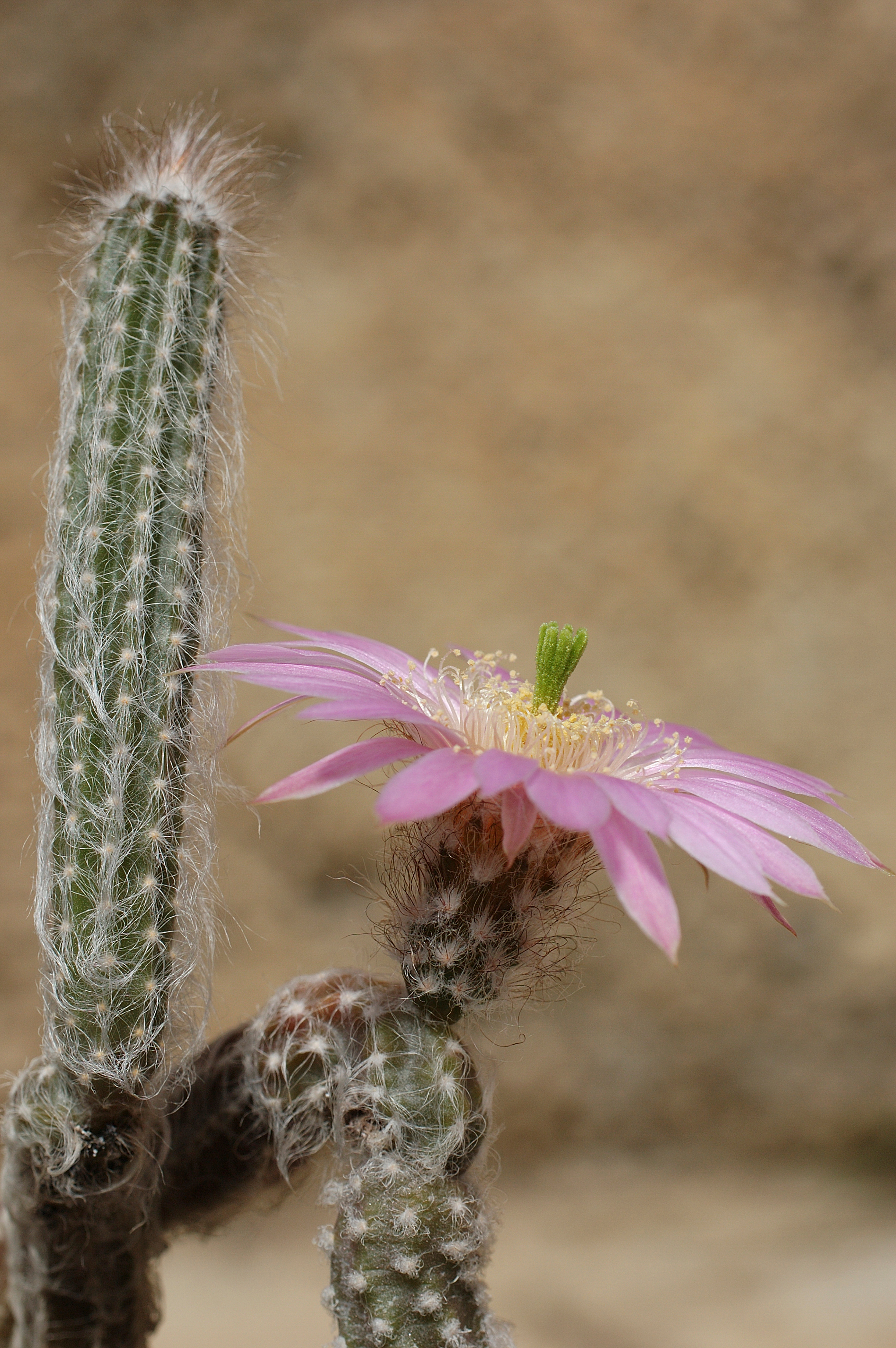Echinocereus schmollii
(Echinocereus schmollii)

Description
Echinocereus schmollii is a species of plant in the genus Echinocereus of the cactus family (Cactaceae). The specific epithet schmollii honors the German artist and cactus collector Ferdinand Schmoll (1879-1950). Echinocereus schmollii usually grows individually with cylindrical, somewhat purple to blackish shoots that reach lengths of up to 25 centimeters with a diameter of 1 centimeter. Their roots are somewhat thickened. There are nine to ten rounded ribs that are humped. The up to 35 hair -like thorns are more or less pink and give the shoots a woolly appearance. They become white or darker and are up to 7 millimeters long. The funnel-shaped flowers are bright pink and appear near the tips of the shoots. They are 3 to 5 centimeters long and reach a diameter of up to 6 centimeters. The ovoid to spherical, juicy fruits are slightly purple-green in color. Echinocereus schmollii is distributed in the Mexican state of Querétaro. The first description as Cereus schmollii was published in 1931 by Wilhelm Weingart. Nigel Paul Taylor placed the species in the genus Echinocereus in 1985. A nomenclatural synonym is Wilcoxia schmollii (Weing.) FMKnuth (1936). The species belongs to the section Wilcoxia. Echinocereus schmollii is listed in Appendix I of the Washington Convention on International Trade in Endangered Species. In the IUCN Red List of Threatened Species, the species is listed as " Endangered (EN) ". H. listed as critically endangered.
Taxonomic tree:







